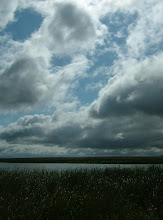 The walls at the eaves are shorter than the walls that are either side of the central hallway within the house.
The walls at the eaves are shorter than the walls that are either side of the central hallway within the house. These are assembled as a two-story section. The posts run from the floor full length to the eaves.
These are assembled as a two-story section. The posts run from the floor full length to the eaves. Corners are strengthened with arch braces pegged into place.
Corners are strengthened with arch braces pegged into place. 
The pegs are pounded into place to joint the posts and beams together.
 The holes of the mortices and tenons are drilled out of alignment so that when the peg is punded into the holes, they are pulled into alignment and the wood is drawn tighter together. This is called draw joinery.
The holes of the mortices and tenons are drilled out of alignment so that when the peg is punded into the holes, they are pulled into alignment and the wood is drawn tighter together. This is called draw joinery. The beams are tenoned into them with an extra notch at the bottom called a shoulder that supports the beam securely in place.
The beams are tenoned into them with an extra notch at the bottom called a shoulder that supports the beam securely in place.
The entire two-story wall frame is lifted and moved and set into position.


 Then the first floor of the taller wall is assembled and lifted into position.
Then the first floor of the taller wall is assembled and lifted into position.
 More sections are added to the front quarter of the house.
More sections are added to the front quarter of the house.The wall sections are then tied together with beams.
 The second story section of the cental wall is build on the floor of the house around the posts of the sections already in place.
The second story section of the cental wall is build on the floor of the house around the posts of the sections already in place. Once these walls are both in place and tied together, rafters can go onto that quarter of the house.
Once these walls are both in place and tied together, rafters can go onto that quarter of the house. Rafters have four pins through a mortice and tenon joint. Being able to see this is an advantage of the queen beams instead of a ridge beam.
Rafters have four pins through a mortice and tenon joint. Being able to see this is an advantage of the queen beams instead of a ridge beam.




No comments:
Post a Comment